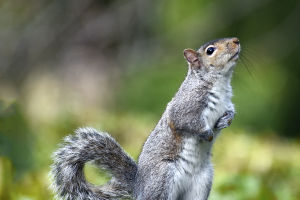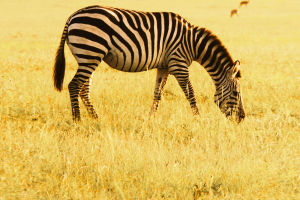On a summer afternoon, as the tranquil lake mirrors the sky, dragonflies leisurely glide through the air, resembling fleets of helicopters.
They hover and dive over the pond, occasionally dipping their elongated tails into the water, creating ripples that expand across the surface. It almost seems as if they are playing.
When dragonflies are seen repeatedly touching the water's surface, it might look like they are playing, but this behavior is actually a vital part of their life cycle, related to laying eggs and reproduction. Dragonflies use their compound eyes to find water bodies by looking for reflections, since their eggs need to be laid in water to hatch, as they cannot develop on land. Therefore, the act of dragonflies "tapping" the water is an essential behavior for their reproduction.
Not all dragonflies lay eggs in water, though. For instance, a common species, the yellow dragonfly, with females exhibiting yellow coloration, usually deposits eggs on stems near ponds, from where they hatch and enter the water. Similarly, damselflies may lay eggs on floating debris on the water surface without tapping the water.
But why do dragonflies lay eggs in water?
Dragonflies undergo incomplete metamorphosis, meaning they are essentially amphibious insects, experiencing three stages in their lifecycle: egg, nymph, and adult.
The most distinct feature is the complete difference in appearance and behavior between the nymph and adult stages. Nymphs live underwater, while adults can only survive on land.
As representatives of semi-aquatic insects, dragonflies lay their eggs in water after mating. The female dragonfly lays eggs near the tip of her abdomen, not at the tail end as commonly perceived.
Once laid in water, the eggs hatch into nymphs, commonly known as "naiads." They attach themselves to aquatic vegetation and roots, feeding on aquatic larvae and mosquitoes, taking at least a year, and undergoing multiple molts before fully metamorphosing into adults. Some species may even take seven to eight years to complete this transformation, making the process quite lengthy.
From nymph to adult, dragonflies are natural predators of mosquito larvae and adults, serving as effective pest controllers throughout their lifecycle.
Now, considering this, what role do male dragonflies play in this process?
Often, male dragonflies are not idle bystanders. Since the process of egg-laying for female dragonflies is not as simple as it seems and requires significant effort, male dragonflies often act as midwives. They fly above the female, gripping her head with their tails, and assisting her in laying eggs on the water's surface.
Isn't it fascinating? The seemingly simple act of dragonflies tapping water holds deeper significance. Dragonflies lead laborious and lengthy lives compared to many other insects. Hence, when we see dragonflies tapping water, it's essential not to disturb them, as it could affect their reproductive success and the control of pests they provide.


